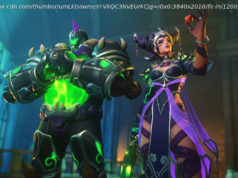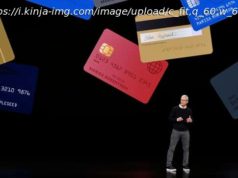Get to know the interface, features and shortcuts in Microsoft’s latest operating system.
Windows 10 is the best operating system that’s come along from Microsoft in a long time. It’s a shape-shifter that changes its interface depending upon whether you’re using a traditional computer or a touch-based one. It undoes the damage wrought by Windows 8, including eliminating the awkward Charms bar and bringing back the long-mourned Start menu. A lot more has changed as well, with a new default browser called Edge, the integration of the Cortana digital assistant, links to Microsoft’s cloud-based OneDrive cloud storage service and plenty more.
Whether you’ve upgraded to Windows 10 from Windows 8 or an earlier version of Windows, or if you’ve got it on a new PC, this cheat sheet will get you up to speed on it. I’ll cover everything you need to know, and I’ve also provided quick-reference charts listing useful keyboard shortcuts, touchscreen gestures and touchpad gestures.
Keep in mind that there have been four major updates to Windows 10 since its initial release in July 2015. This story is based on the Windows 10 Fall Creators Update, released in October 2017, so the features that are described here and the screenshots you see may differ from what you see on-screen if you have an older version of Windows 10.
Note: If you want to get the most out of Windows 10, you’ll have to use a Microsoft ID as your user account. Without a Microsoft ID, you won’t be able to use a number of Windows 10 apps or sync settings among multiple devices. So when you set up Windows 10 for the first time, sign in with an existing Microsoft ID or create a new one.
Before we get started, a few words about some terminology you’ll need to know. Microsoft has sowed enormous confusion with a set of lightweight apps that were originally designed for the Windows 8 touch-oriented Start screen interface. It first called them Metro apps, and then through the years changed their names to Modern apps, Windows Store apps, and then Universal Windows apps. Now it’s settled simply on Windows apps, although at times the company also calls them Universal Windows apps, to get across the point that they will run on all versions of Windows 10, including for mobile phones. In this article, we’ll refer to them as Windows apps.
What about apps designed for the desktop? Microsoft now calls them Windows desktop applications. In this article we’ll call them desktop applications, for simplicity’s sake.
The Start menu is command central for Windows 10. (Click image to enlarge it.)
The menu is divided into two sections. Down its left side you’ll find the following:
At the very top of the All Apps list is a list of the apps and applications you use most frequently. Right-click any and you’ll see a list of the files you’ve recently opened in it. Click the file to open the application or app, with the file loaded into it.
In some instances you’ll see a folder with a down arrow next to it rather than an icon — that means there are several options there, for example, to run the Dropbox app or visit the Dropbox website. Click the folder to show all the options, then click the option you want to run. (Also note that in some instances, there will be a folder, but when you click it, you only get one option, to run the app or application.)
The jump list for Acrobat Reader shows the PDFs you’ve recently opened. (Click image to enlarge it.)
Some tiles are «live» — that is, real-time information gets piped into them. So the Mail tile, for example, shows your latest email, the Weather shows the weather and so on. Only Windows apps have live tiles. Desktop applications, such as Microsoft Office, don’t. Each group of tiles is three columns wide, with most tiles taking up one column by default.
As shown in the video at the top of the page, the Start menu is highly customizable. To change its height, hover your cursor over its top edge until a two-headed arrow appears, then drag it up or down to expand or shrink it. On some Windows 10 installations you can do the same thing at the right edge of the menu to expand it to the right or shrink it back again, although this doesn’t work for everybody.
To rename a group of tiles, click the group name and type in a new name for it. You can also move tiles around the Start menu by dragging them from one group to another, or, to create a new group, drag tiles to a blank area on the menu. You can name any unnamed group by clicking on the blank area above it and typing in a name.
You can also widen the groups in the Start menu so that tiles take up four columns rather than three. To do it, from the Start menu select Settings > Personalization > Start and in the «Show more tiles» setting, move the slider to On. The tiles will now take up four columns, but to take advantage of the extra space you’ll have to manually drag tiles to the fourth column. You can personalize many other aspects of the Start menu from this Settings page, including whether to show your most used apps, have the Start screen run full screen and more.
When you right-click a tile, a menu pops up. Here’s where things get a bit confusing, because not every Windows app and desktop application has the same pop-up menu, and depending on your installation you might have to click «More» to see some of these options. Most have some combination of these choices:
Some Windows apps have other choices as well, depending on their purposes. For example, right-click the This PC app and you get choices such as mapping or unmapping a network drive.
You can also right-click the icons for the «Most used» apps on the left side of the menu as well as the File Explorer, Settings and Power icons underneath them. (If you right-click All Apps, no menu appears.) Windows apps and desktop applications on the «Most used» app menu typically have similar choices to those already outlined (with some hidden under the «More» submenu). In addition, you might find these additional options:
Windows 10 introduces Microsoft’s Siri-like digital assistant Cortana to computers. (It was first introduced on Windows Phones in 2014.) Cortana is a kind of a Jane-of-all-Trades and does everything from searching your computer and the internet for files and information to keeping track of your schedule, alerting you to upcoming events, tracking news and more.
Cortana is automatically turned on when you start Windows 10 and has no on/off switch. (Before the Windows 10 Anniversary Update was released in August 2016, there was a switch that let you turn it on and off, available from Cortana’s settings. Now turning Cortana off requires a registry hack.)
Whenever you have a question you want Cortana to answer or an action you want it to take, type it into the search box in the lower left of your screen, just to the right of the Start button. If you also want Cortana to respond to voice commands, not just typed text, you need to make sure that switch is turned on. To do it, click in the search box, then click the Settings icon (it’s a gear) toward the lower left of the screen that appears. You’ll be sent to Cortana’s settings page. Click “Talk to Cortana” on the left side of the screen, and then in the “Hey Cortana” section, move the switch to On in the “Let Cortana respond to Hey Cortana” section. From now on, you can say, «Hey Cortana» and tell it what you want to do, or else put your cursor in the search box and type in your request.
The most basic thing you’ll probably do is search. Cortana uses the Bing search engine to look through your files, your Microsoft OneDrive cloud storage, your videos and music, the apps on your PC, your settings, your email and the web. When you do a search, by default three icons appear at the top of the results: the leftmost one shows any app-related matches, the middle shows documents that match the search, and the one on the right shows web-related matches. When you do a search and click the web icon, you’ll then need to click a right-facing arrow next to the search in order to see the results, which will be displayed in a flyout panel that appears on the right side of the screen. The panel is essentially a mini-browser with the same information that you’d get if you did a search from inside your browser, including photos, links and so on.
Cortana shows many results in a flyout mini-browser. (Click image to enlarge it.)
One thing about Cortana is a bit confusing. Even though it searches through many locations as I described previously, it doesn’t show all those results unless you tell it to. So, for example, it won’t show you the results of searching through photos on your PC unless you add a filter telling it to. To add filters, after you’ve done a search, click the Filters drop-down on the top right of the screen. You’ll see a long list of types of content, including emails, music, people, photos, videos and others. Click any content you want Cortana to display when you do searches. The next time you do a search, a new icon — for example, photos — will be added to the original three at the top of the screen. To see Cortana’s search results of photos on your PC, click the icon after you do a search.
Cortana lets you apply filters to fine-tune your search results. (Click image to enlarge it.)
To make things even more confusing, sometimes Cortana shows results in a scrollable list just above the search box, categorized by content such as Documents, Folders, Photos and so on so that you don’t need to click a filter icon to see results.






